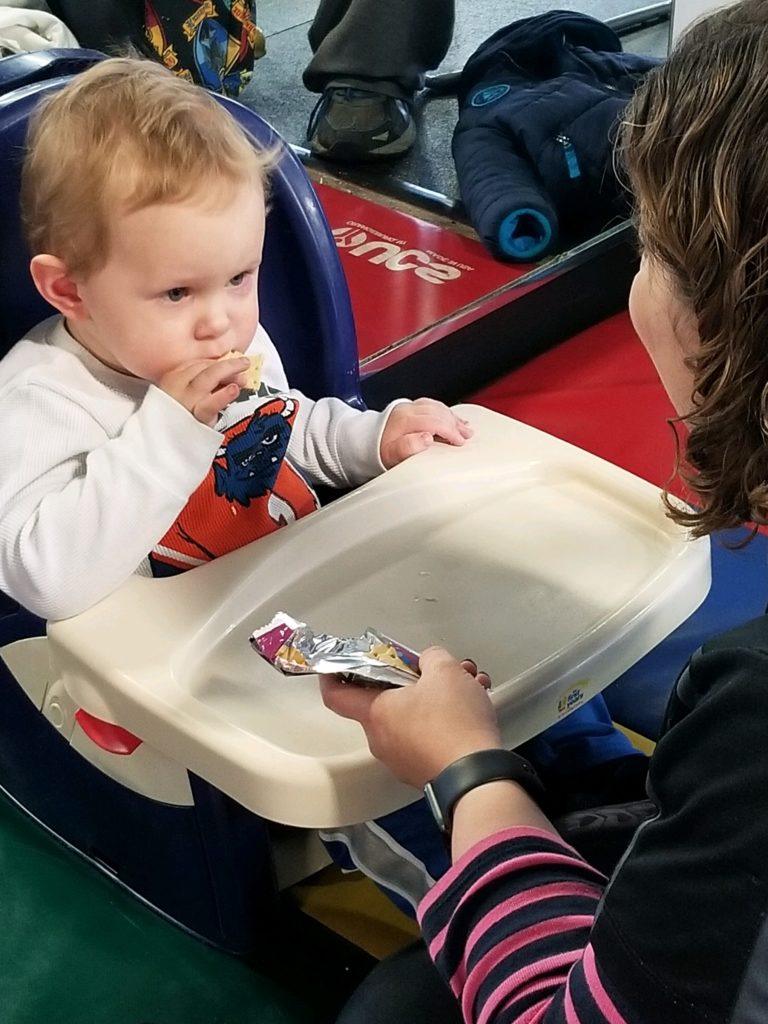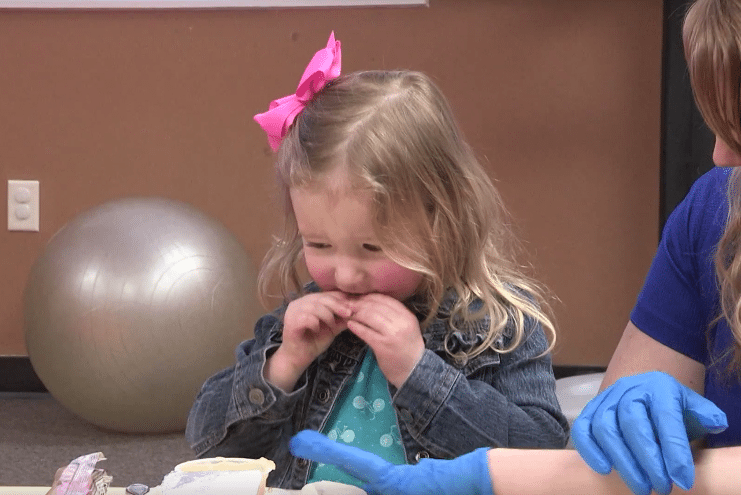Feeding Therapy / Picky Eaters
If your child only eats certain foods or dislikes trying new foods he/she may be considered a picky eater.
The sensory sensitive child may be hypersensitive to the smell, sight, or texture of certain foods which limits their overall diet and nutrition.
A speech therapist and/or occupational therapist can work with your child on integrating more food choices to their diet.
Some strategies that you can try at home may include:
- Eat dinner as a family
- Do not allow your child to graze all day
- Remove distractions from dinnertime – turn off TV and put away phones
- Only introduce 1 new food at a time in small portions
- Introduce the new food at the beginning of the meal when the child is hungry
- Give choices – do you want 3 or 5 green beans?
- Do not require a clean plate
Developmental Checklist
Is your child meeting their developmental milestones?
Strategies to increase sensory tolerance for new foods:
- Allow touching of non-preferred foods with fingers
- Discuss food properties, varieties, preparation and preferences
- Try variations of foods (cooked vs raw carrots)
- Try changing the temperature of the food (frozen, cold, or room temperature grapes)
- Try different dips or sauces that the child prefers
- Read books about trying new foods, from your local library
The following are red flags that could be a sign that your child may need professional help with their feeding. Talk to your child’s doctor!
- Inappropriate weight gain (under/overweight)
- Choking, gagging, coughing, or vomiting with eating
- Difficulty with accepting different textures of foods
- Not accepting an entire food groups (i.e. fruits, vegetables, meats…)
- Food range less than 20 foods
- Child fights with parent about foods or mealtime
Success story: Christina, mom of a picky eater, “Mealtime used to be frustrating. Now we can all eat the same foods without it being stressful!”
If you have a child that you feel is a picky eater, reach out to your pediatrician for guidance.
Speech and/or Occupational therapists can work with you and your child to integrate more food choices into their diet.
Common Feeding Questions from Parents
Most children start eating solid foods between 10 months to 12 months. It is best to start with a really soft food (i.e. heavily steamed carrots) or food that melts readily (i.e. puffs or melts).
We like to present a solid food for the first time on the side on the mouth, or encourage them to place it there. By placing a small piece of the puff on the side of their mouth, you are making it easier for them (they dont have to move the piece of food from the center of the mouth to the side). This allows them to get used to the feeling and focus on chewing.
A good rule of thumb is between 15-20 foods by ages 3. You also want to make sure they have 2-3 in each food group (breads/grains, fruits, vegetables, meats) and aren’t specific to brand or color.
Your child should start using straws and open cups between 10-12 months.
Every cup is made a little differently. For development of the mouth muscles, straws and the 360 cups are the best, however sippy cups are functional. If you give your kiddo a sippy cup try to drink out of it once yourself to make sure it isn’t too hard to get liquid out of (cups with stoppers can be difficult and can cause a child to use and overdevelop movements that are more immature)
Using a timer or using a reward chart can give children a visual incentive and an achievable goal. Starting small and building the length of time and slowly increasing interaction with the food is best so children don’t shut down.
Sometimes if we present the food with a preferred food, the child will interact more. For example, do they like any condiments that the child can dip the vegetables into? Or can you make it look more fun by adding sprinkles? A reward system can sometimes make all the difference and gets the child from hyper-focusing on the food item they are dreading.
5 Interesting Picky Eater Facts
1
Children don’t only eat what they like: children’s diets can be greatly influenced by what others around them eat. If mom and dad don’t eat the vegetables, they might not want to as well. Try eating the foods with your child so they see what a positive experience it is.
2
Just because they don’t like a food one time, doesn’t mean they wont ever eat that food: A child needs to try a food multiple times before they can truly say they don’t like it. If a child doesn’t want a food once or says they don’t like it, take a few meals off, then try presenting it again.
3
A child can get sick of a food. Try to make sure to mix up meal choices enough so that they don’t get sick of a food and kick it out of their diet.
4
Making a child try a food is not always the best option. This can cause them to be fearful or anxious during meal time, if they aren’t willing to try a food, see if they will do something else with it: touch, kiss or lick.
5
The environment for eating is very important: sitting down together as a family is the best way as often as you can. If they see their parents and/or siblings eating a food, they have a more positive association. Sitting in front of the TV or iPad or being watched while the eat makes mealtime more stressful and makes them a less active participant.
Through steady improvement, your child can attain a boost of confidence.
Help your child find new levels of independence with pediatric therapy in Cincinnati and Dayton, OH.
 Skip to content
Skip to content





